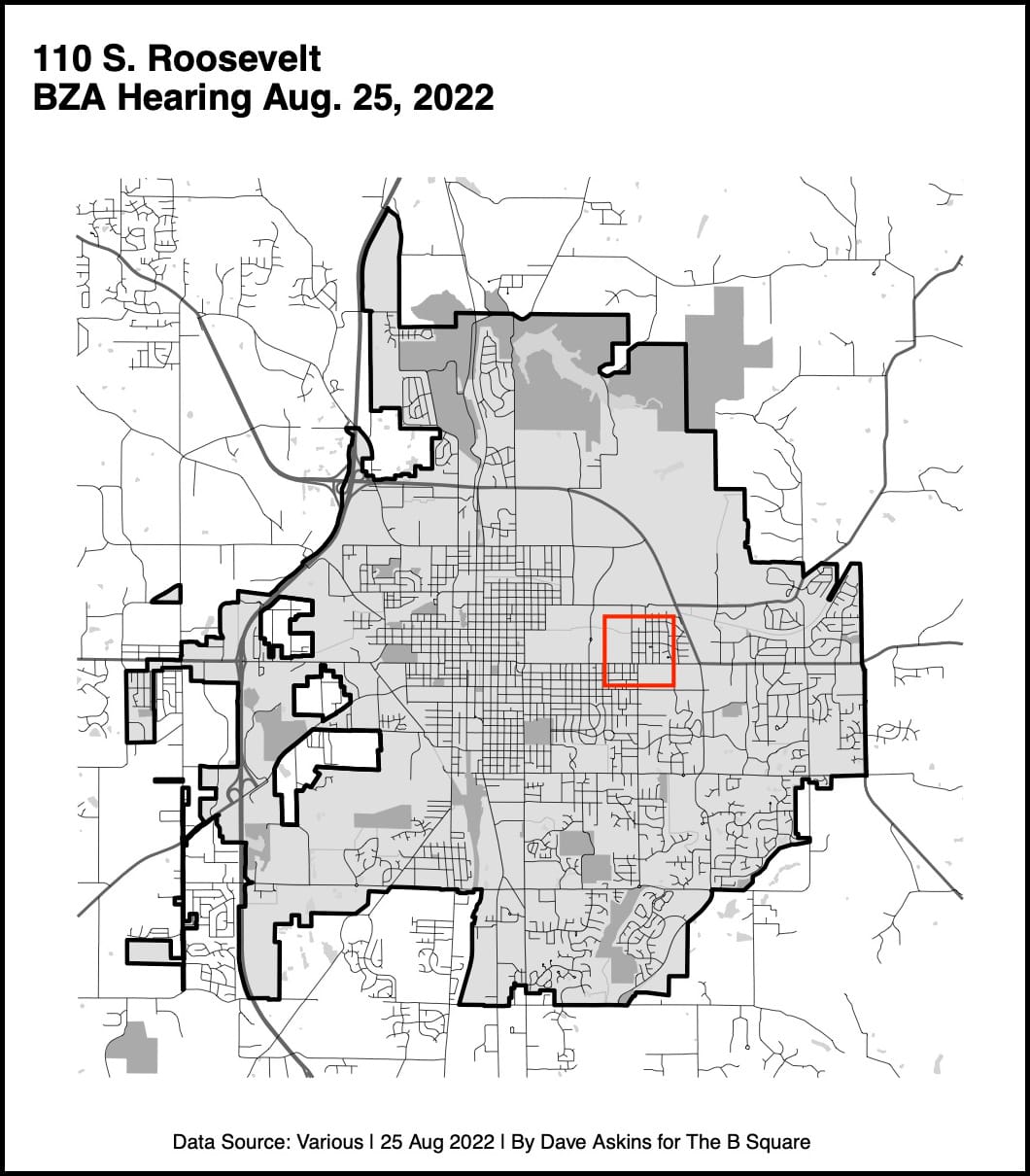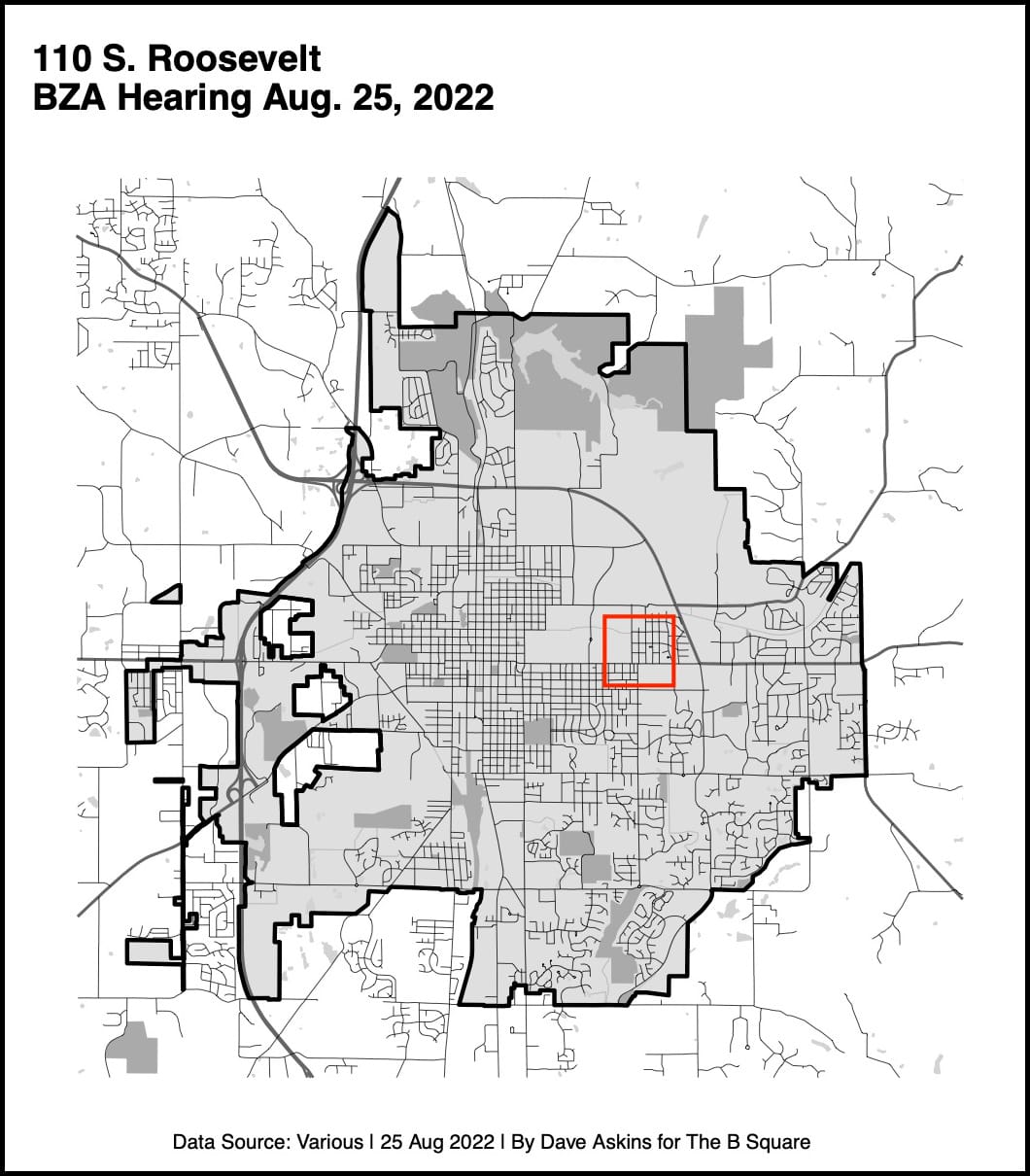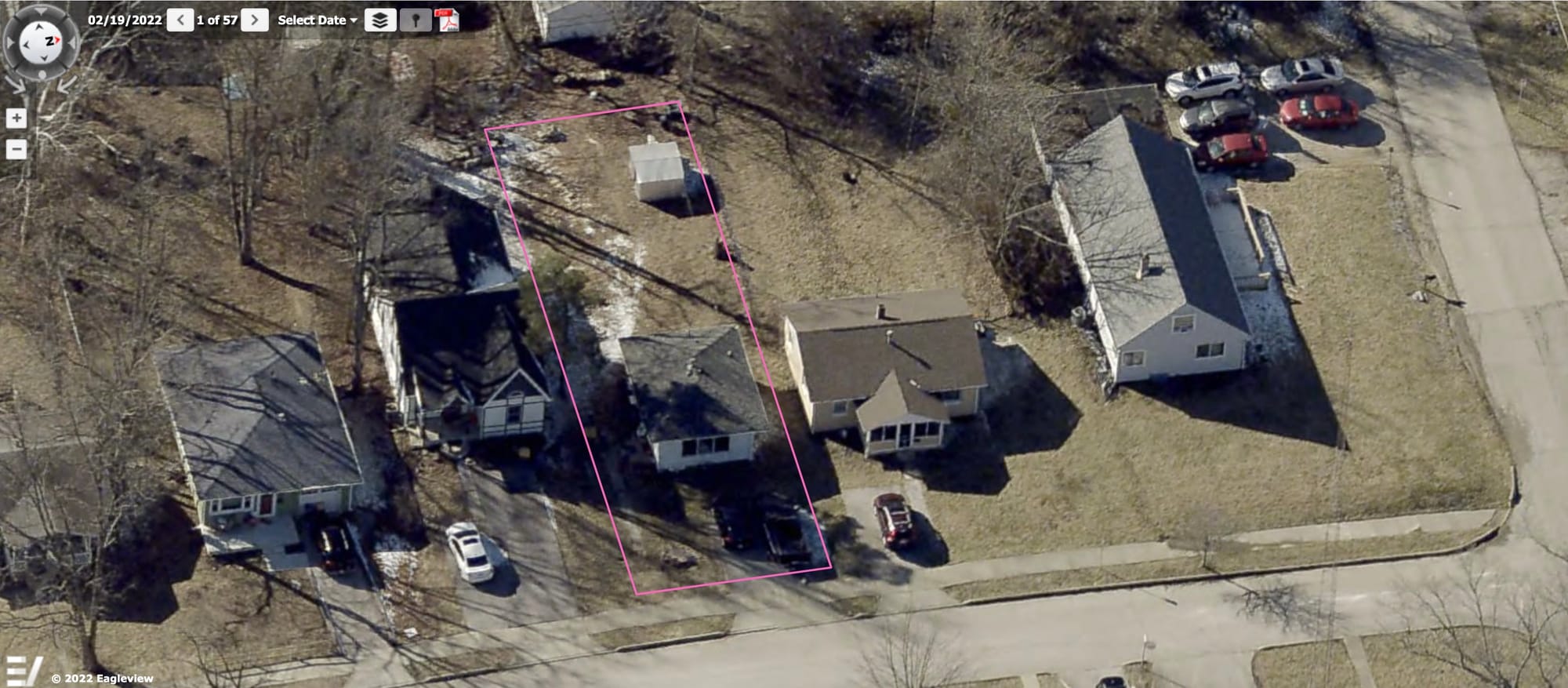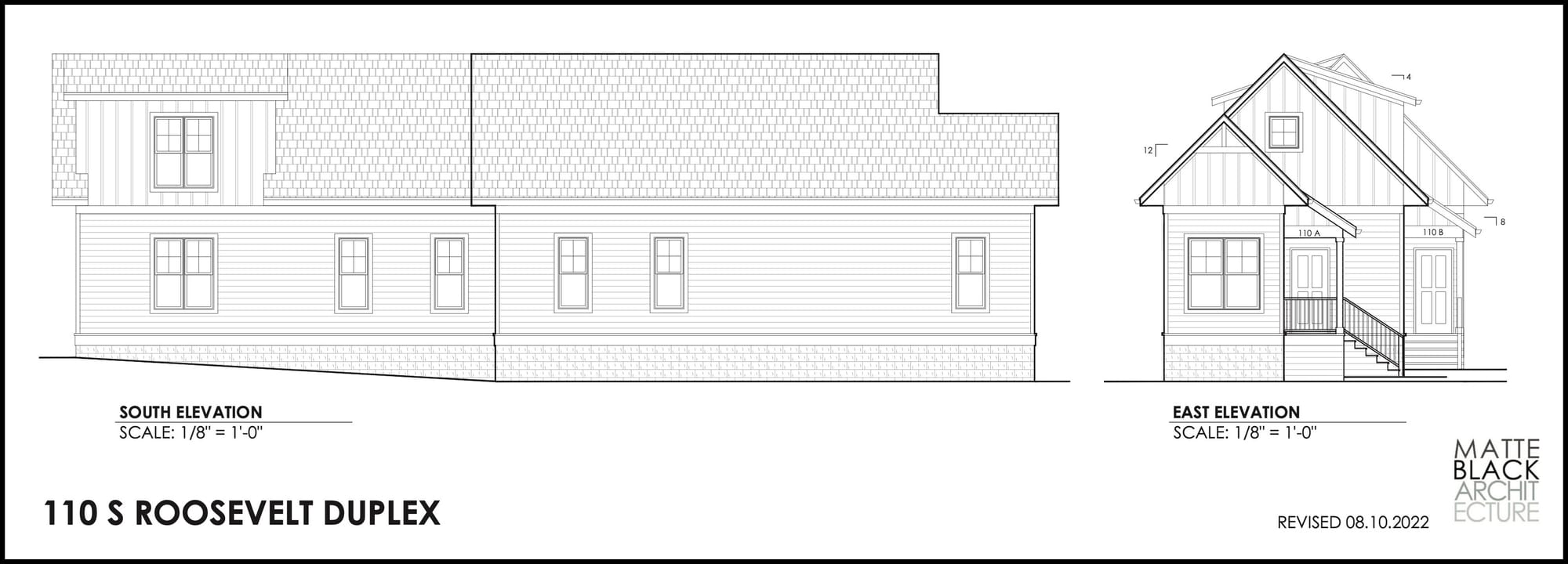Duplex east of IU gets conditional use OK from Bloomington BZA, first one after year of new zoning





In more than a year since Bloomington mayor John Hamilton signed revisions to the city’s unified development ordinance (UDO) into law, just one application to construct a duplex as a conditional use has been heard by the city’s board of zoning appeals (BZA).
The BZA’s approval of that application came at Thursday’s meeting on a unanimous vote by the five-member board.
Grant Properties owner Doug McCoy will now be able to demolish a 432-square-foot house on the lot a couple blocks east of the Indiana University campus, and build a one-and-a-half-story duplex there. The address of the property is 110 S. Roosevelt St.
The lot, as well as the immediately surrounding area, is zoned R3 (residential small lot). It measures about 4,700 square feet.
A conditional use means that before the property can be used in a particular way, say as a duplex, it has to go through a public review process, including a meeting with neighbors.
According to the planning staff report, at the required pre-submittal neighborhood meeting, one neighbor was concerned about the potential that the duplex would create additional demand for on-street parking. The Grant Properties proposal is to maintain the existing parking area on the lot. The two parking spaces now on the property is the maximum allowed for a duplex under Bloomington’s UDO.
One of the standards for duplexes is that the design has to resemble a similar design as the majority of the existing houses on the same block. BZA members did not have any concerns with the design that was submitted by Matte Black Architecture.
The bedroom limit for a duplex is six bedrooms. Each half of the Roosevelt Street duplex will have two bedrooms.
The standards for granting a conditional use application are:
- The proposed use and development will not result in the excessive destruction, loss or damage of any natural, scenic, or historic feature of significant importance.
- The proposed development shall not cause significant adverse impacts on surrounding properties nor create a nuisance by reason of noise, smoke, odors, vibrations, or objectionable lights.
- The hours of operation, outside lighting, and trash and waste collection must not pose a hazard, hardship, or nuisance to the neighborhood.
- The petitioner shall make a good-faith effort to address concerns of the adjoining property owners in the immediate neighborhood as defined in the pre-submittal neighborhood meeting for the specific proposal, if such a meeting is required.
The city council’s decision last year to allow duplexes as a conditional use in R zones was controversial, winning approval by the city council on a 6–3 vote. A majority of councilmembers wanted to make it possible to add to the city’s housing capacity in areas where up to now only single-family houses were permitted uses under zoning code.
The planning staff report on the Grant Properties duplex puts the proposal in the context of the city’s comprehensive plan and states, “[M]ore housing near the university is desired, and this proposal adds a unit through redevelopment.”
When Hamilton signed the UDO revisions into effect on July 12, 2021, that established an every-six-month reporting requirement by the planning staff to the plan commission, the mayor’s office and the city council.
After six months, when the first set of findings were delivered at a presentation to the city council, zero conditional use applications for duplexes were reported. On that occasion, councilmembers debated the question of whether six months was sufficient time to draw conclusions about the success or failure of the revisions to the UDO.
The second six-month report is now a bit past due. It will reportedly be delivered to the plan commission at that group’s September meeting.




Comments ()